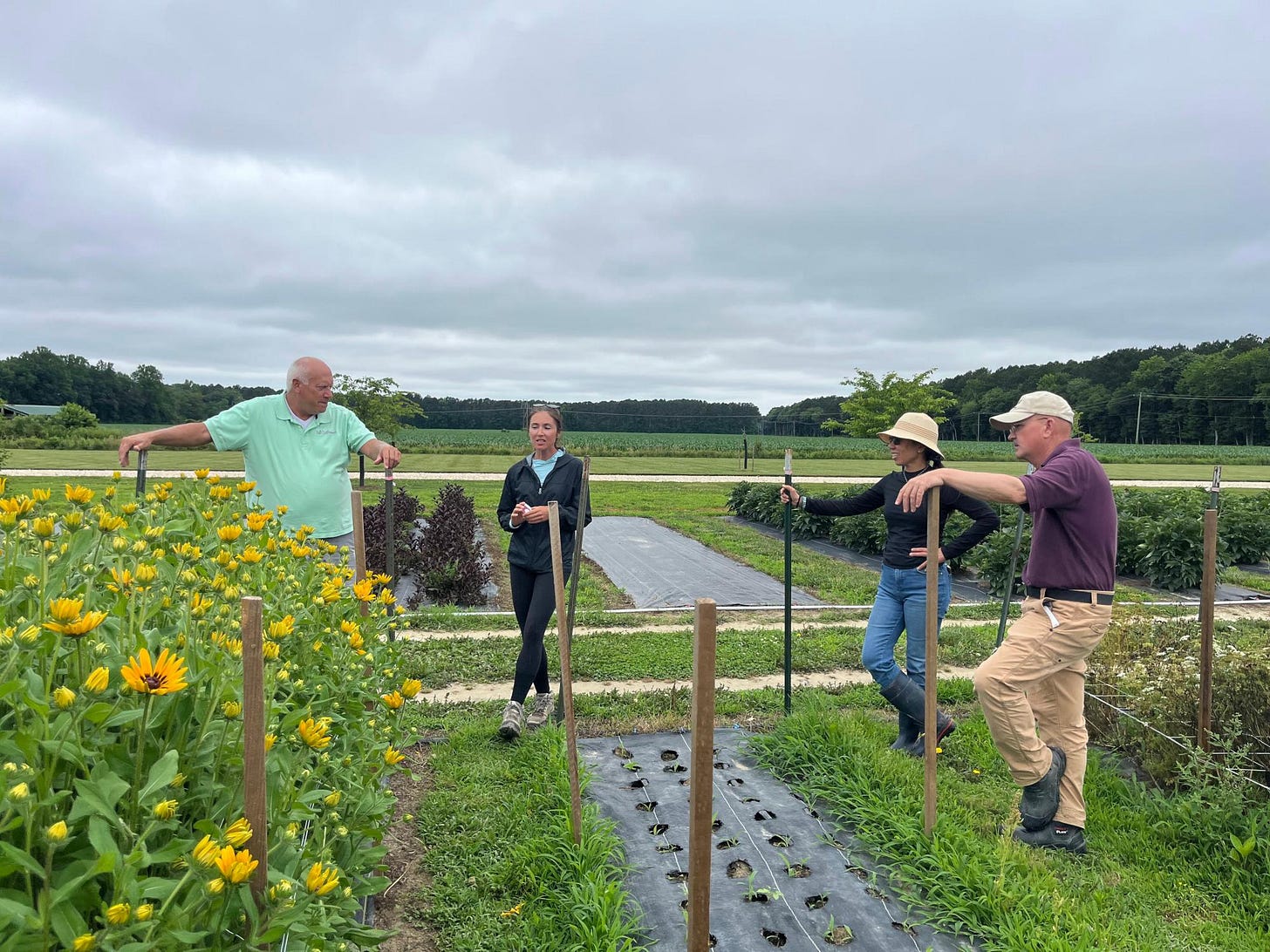I love visiting flower farms. In the early days of my floral design business, going to the farm was how I sourced flowers. I only bought locally grown flowers and nobody delivered. I took advantage of those trips and turned my pick-up route into a floral education. Farmers taught me everything on those visits: the quirks of each variety, when and how to harvest them, behind-the-scenes of farm life and the business of growing flowers. Over time, I became more than a customer to my growers. I was a collaborator and friend.
Now that I've slowed my design business down, and more growers offer delivery, I don't get to visit farms like I used to. Farmers generally don't encourage visitors anyway. I get it. They're working. The farm is also often their home. Who wants randos showing up. I have a flower-famous friend who can open farm gates for a visit occasionally.
Flower OG Dave Dowling texted me a few weeks ago. He said he was going to invite himself over to Winters Farm Florals and asked me to join him. I knew Dani wouldn't mind. Dave showing up is like a celebrity crashing your wedding. I suggested adding Seaberry to the trip as they were not too far away on the Eastern Shore of Maryland. It turned into a mini farm tour when Seaberry farmers WenFei and Rick also wanted to see Winters Farm Florals, and Dani wanted to visit Seaberry.
Our first stop was Seaberry. WenFei and Rick moved to Maryland in 2006 after teaching horticulture at Cornell University. This farm is my biggest supplier, and at 36 acres in production, it's one of the largest in the Mid-Atlantic. They specialize in woody cuts - evergreens, willows and flowering branches. They also grow a huge volume of peonies, dahlias and annuals. Most of their product goes to wholesalers and grocery stores. I charm them into selling to my tiny shop.
We hopped on a golf cart for a tour of the fields. The harvest crew was clipping dill and lace flower for grocery store bouquets. They fill a motorized cart rigged with a shade cloth to protect the cut stems. Each full load speeds off for storage in the cooler. Every step is optimized.
While walking the fields, we had a lively discussion about spacing for annuals. Rick plants everything at a standard 10-inch spacing. Dave suggested tighter spacing might yield taller stems. Rick considered the advice but was hesitant. It would mean hand planting or reconfiguring tractor settings. It felt like old times for me.
Next, we drove about 40 minutes to Dani’s farm. Winter's Farm Florals is a compact but mighty three acre operation. She grows in both greenhouses and in the fields. First stop was her tulip room. Dani was forcing over 20,000 winter tulips for florist sales. She starts in January and runs all the way through tulip season. I put in an early reservation for a couple thousand.
Dani grows a wide variety of annuals and some perennials. The Eastern Shore has sandy soil. She is able to grow flowers, like craspedia, that don't work for my other suppliers. Her micro-climate also tends to bloom her crops bloom a week or two earlier than my growers inland. She can get me some local color before anyone else.
Dani is committed to quality. The neat, well-organized layout, with wide rows and weed-free beds, doesn’t just look good - it creates the conditions for healthier plants, better airflow and more efficient harvesting. That attention to detail shows up in the flowers she grows.
Buying local makes flower friends. From the start of my business, I chose local flowers so I could connect flower buyers and growers. The industry in my area has matured so that farms and co-ops make delivery possible. Even though I don't visit farms like I used to, the relationships continue to thrive.







We love to visit farms and host guests here! It’s so interesting and inspiring to see other people’s perspectives on farming.
So fun! How can florists build relationships with farmers if they aren't able to visit the farms like you did?